What Haircut Should I Get?
Identifying Your Face Shape
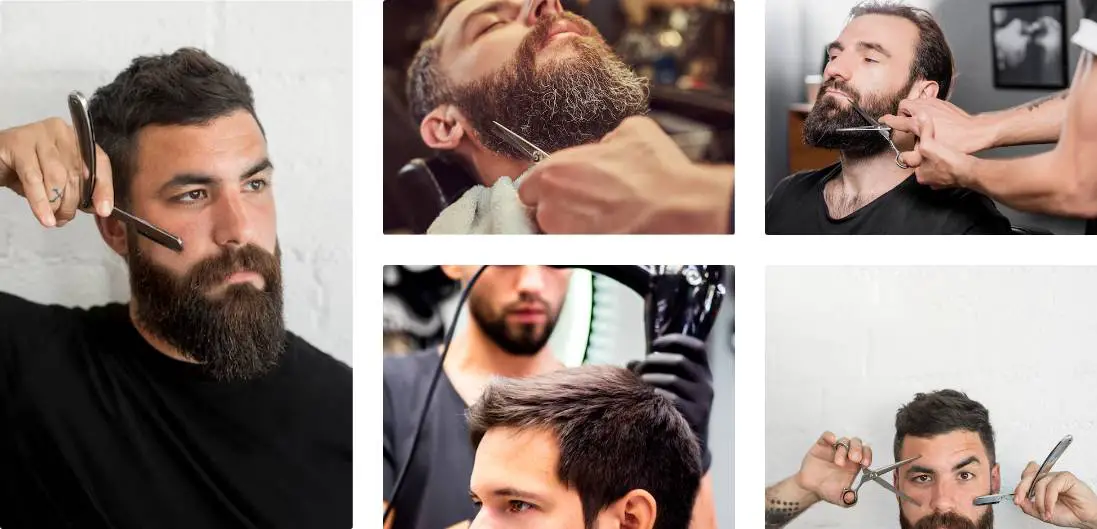
Understand the Different Face Shapes
Determining your face shape is the first step in finding the perfect haircut. There are several common face shapes, each with its own unique features and styling considerations. Understanding these different shapes will help you identify your own and make informed decisions about the haircuts that will flatter you the most.
Oval Face Shape
The oval face shape is often considered the most versatile, as it can accommodate a wide range of hairstyles. Characterized by a forehead that is slightly wider than the chin, and cheekbones that are the widest part of the face, the oval face shape is well-balanced and symmetrical.
Round Face Shape
A round face shape is defined by its soft, full features and lack of sharp angles. The forehead, cheekbones, and jawline are all roughly the same width, creating a circular appearance. Individuals with round faces often benefit from hairstyles that add volume and definition to the face.
Square Face Shape
The square face shape is characterized by a strong, angular jawline and a forehead that is the same width as the cheekbones. This face shape is often associated with a more masculine appearance and can benefit from hairstyles that soften the sharp features.
Heart-Shaped Face
A heart-shaped face is wider at the forehead and tapers down to a narrow, pointed chin. The cheekbones are often the widest part of the face, and the jawline is typically narrow. Hairstyles that add volume to the sides of the face can help balance this shape.
Diamond Face Shape
The diamond face shape is defined by high, prominent cheekbones and a narrow forehead and chin. This face shape is often considered one of the most striking and can be complemented by hairstyles that add width to the forehead and chin.
Determine Your Own Face Shape
To determine your own face shape, examine the proportions of your forehead, cheekbones, and jawline. Stand in front of a mirror and trace the outline of your face with your finger. Notice the widest and narrowest points, as well as the overall shape. You can also take a photo of yourself and compare it to the different face shape descriptions to find the one that best matches your features.
Haircuts that Complement Your Face Shape
Once you’ve identified your face shape, you can start exploring the haircuts and styles that will flatter your unique features. Different face shapes require different approaches to achieve the most harmonious and balanced look.
Oval Face Shape
Individuals with oval face shapes have the luxury of experimenting with a wide range of hairstyles, from short and textured to long and layered. Bangs can also be a great option, as they can help add definition to the forehead.
Round Face Shape
For those with round faces, hairstyles that add height and volume to the top of the head can help create the illusion of a more elongated appearance. Layers, side-swept bangs, and styles with a slight lift at the crown can all be flattering choices.
Square Face Shape
Softer, more layered hairstyles can help balance the strong, angular features of a square face shape. Styles that add volume and movement, such as shaggy cuts or textured waves, can help create a more feminine and flattering look.
Heart-Shaped Face
Hairstyles that add volume and width to the sides of the face can help balance a heart-shaped face. Layers, side-swept bangs, and styles with a slight lift at the crown can all be excellent options.
Diamond Face Shape
For those with a diamond face shape, hairstyles that add width to the forehead and chin can help create a more balanced appearance. Blunt bangs, side-swept styles, and layered cuts can all be flattering choices.
By understanding the different face shapes and the haircuts that complement them, you’ll be well on your way to finding the perfect style that enhances your natural features and boosts your confidence.
Considering Your Hair Type and Texture
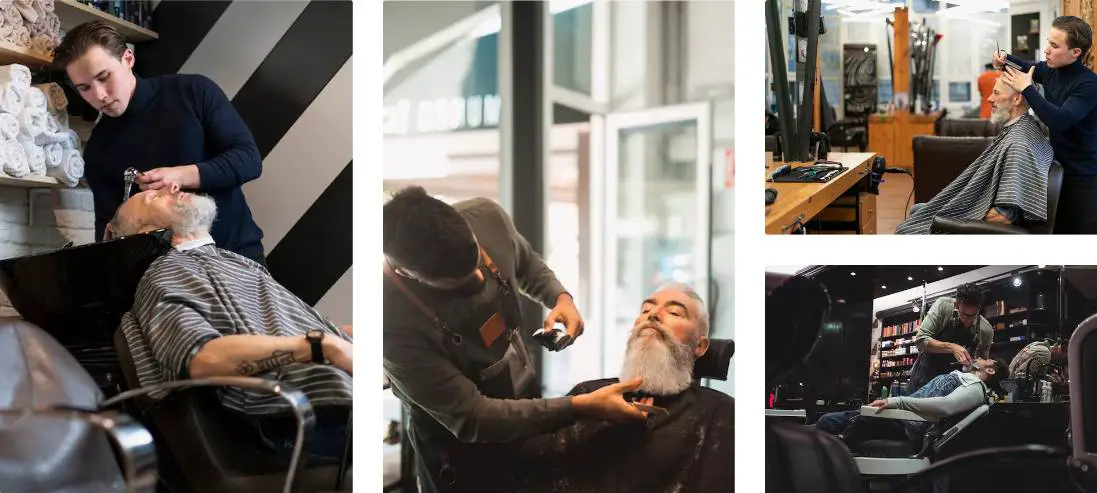
Understanding your hair type and texture is crucial in determining the most flattering and manageable haircut for you. Let’s dive into the different hair types and textures, and explore how they can influence your styling options and haircut choices.
Assessing Your Hair Type
Your hair type refers to the natural shape and pattern of your strands, ranging from straight to wavy, curly, and coily.
Straight Hair
Straight hair is characterized by a smooth, linear pattern with no visible waves or curls. This hair type is often fine in texture and can be prone to looking flat or lifeless without the right styling techniques.
Wavy Hair
Wavy hair has a gentle, S-shaped pattern that is more pronounced than straight hair but not as defined as curly hair. This hair type can be versatile, allowing for a range of styling options, from sleek and smooth to tousled and textured.
Curly Hair
Curly hair has a distinct, spiral-like pattern that can range from loose, bouncy curls to tight, coily ringlets. Curly hair often requires more moisture and specialized care to maintain its shape and prevent frizz.
Coily Hair
Coily hair has a tight, zig-zag pattern that is the most tightly coiled of all hair types. This hair type is often associated with African or Afro-textured hair and requires a high level of hydration and gentle handling to thrive.
Understanding Hair Texture
In addition to your hair type, the texture of your hair – whether it’s fine, medium, or thick – can also influence the best haircut and styling options for you.
Fine Hair
Fine hair is delicate and lightweight, often appearing thin or wispy. Individuals with fine hair may benefit from styles that add volume and body, such as layered cuts or styles with a slight lift at the roots.
Medium Hair
Medium hair is the most versatile texture, striking a balance between fine and thick. This hair type can accommodate a wide range of haircuts and styling techniques, from sleek and straight to voluminous and textured.
Thick Hair
Thick hair is dense and coarse, often requiring more maintenance and styling effort. Individuals with thick hair may find that certain haircuts, such as blunt or heavy bangs, can help manage the volume and weight of their strands.
Haircuts and Styling Techniques for Your Hair Type and Texture
Once you’ve identified your hair type and texture, you can explore the haircuts and styling techniques that will work best with your natural characteristics.
For straight hair, consider styles that add movement and dimension, such as layered cuts or styles with subtle waves or curls. Fine, straight hair may benefit from volumizing products and styles that create the illusion of thicker, fuller strands.
Wavy hair can be enhanced with styles that accentuate the natural movement, like shaggy or textured cuts. Embracing the natural wave pattern can also be a great option, with styles that showcase the hair’s natural texture.
Curly and coily hair types often thrive with haircuts that allow the curls to spring to life, such as layered or tapered styles. Maintaining the hair’s natural curl pattern and using moisturizing products can help keep curls healthy and defined.
Regardless of your hair type and texture, it’s essential to work with a skilled hairstylist who can assess your unique characteristics and recommend the best haircut and styling techniques to enhance your natural beauty and boost your confidence.
By understanding the nuances of your hair type and texture, you’ll be empowered to make informed decisions about the haircuts and styling approaches that will help you achieve your desired look and feel your absolute best.
Defining Your Personal Style
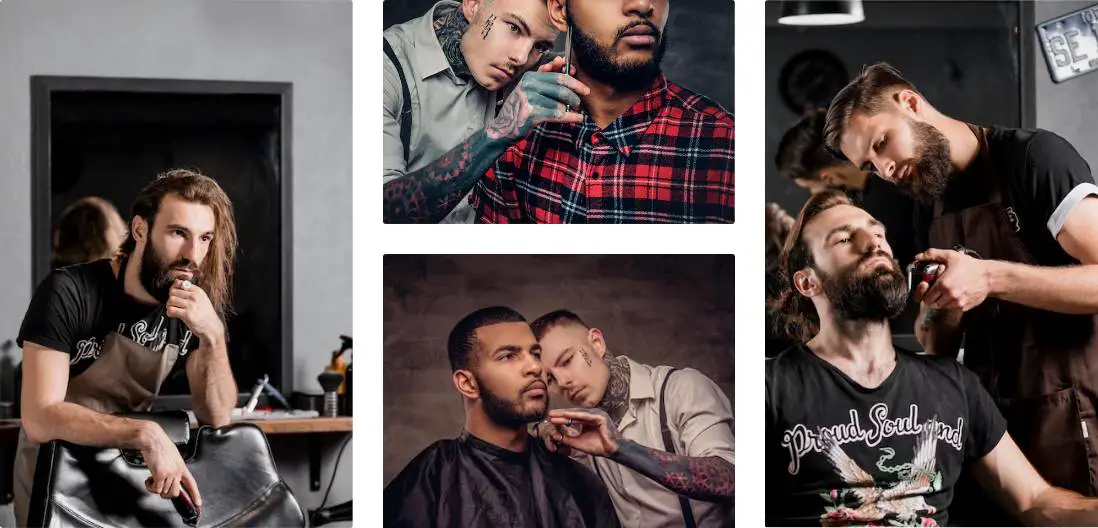
Reflecting on Your Personal Style and Fashion Preferences
Your personal style is a unique expression of your individuality, reflecting your values, interests, and overall aesthetic preferences. When defining your personal style, it’s essential to take a step back and honestly assess what you’re drawn to in terms of fashion and self-presentation.
Consider the clothing items, colors, and patterns that you naturally gravitate towards. Do you prefer a classic, timeless look or do you enjoy experimenting with more trendy, edgy styles? Reflect on the outfits that make you feel most confident and comfortable, as these can provide valuable insights into your personal style.
Additionally, think about the overall image and impression you want to convey to the world. Are you aiming for a polished, professional look or do you prefer a more relaxed, casual vibe? Understanding the message you want to send through your appearance can help guide your haircut choices.
When considering a new haircut, think about how it will interact with the rest of your appearance. Does the cut complement the shape of your face? Will it work well with your hair texture and volume? Most importantly, does the style align with the image you want to project, whether that’s sophisticated, edgy, or anything in between?
Exploring Trendy, Classic, or Edgy Haircut Options
With a clear understanding of your personal style and desired image, you can begin exploring haircut options that align with your preferences. Consider the following:
Trendy Haircuts
Stay up-to-date with the latest hairstyle trends, which can inject a fresh, modern vibe into your look. These cuts often feature bold, eye-catching elements, such as asymmetrical layers, blunt bangs, or dramatic color.
Classic Haircuts
Timeless, versatile styles like the bob, the pixie, or the layered cut can create a polished, sophisticated appearance. These cuts tend to be low-maintenance and can be easily adapted to suit your face shape and hair texture.
Edgy Haircuts
If you’re drawn to a more daring, avant-garde aesthetic, explore edgy haircut options that push the boundaries of traditional styles. This could include shaved designs, textured mullets, or unconventional color combinations.
Determining Low-Maintenance or High-Maintenance Haircuts
Finally, consider the level of maintenance you’re willing to commit to your haircut. Do you prefer a low-maintenance style that requires minimal styling and upkeep, or are you open to a more high-maintenance cut that may require regular trims, styling products, and time-consuming techniques?
Low-maintenance haircuts, such as blunt bobs or textured layers, can be a great option for those with busy lifestyles or who prefer a more effortless look. High-maintenance cuts, like intricate undercuts or precision-cut bangs, may require more time and effort to maintain, but can also offer a more polished, statement-making appearance.
By reflecting on your personal style, considering how your haircut can complement your overall look and image, exploring a range of trendy, classic, and edgy options, and determining your desired level of maintenance, you’ll be well on your way to defining a haircut that truly captures your unique essence and boosts your confidence.
Consulting with a Professional Stylist
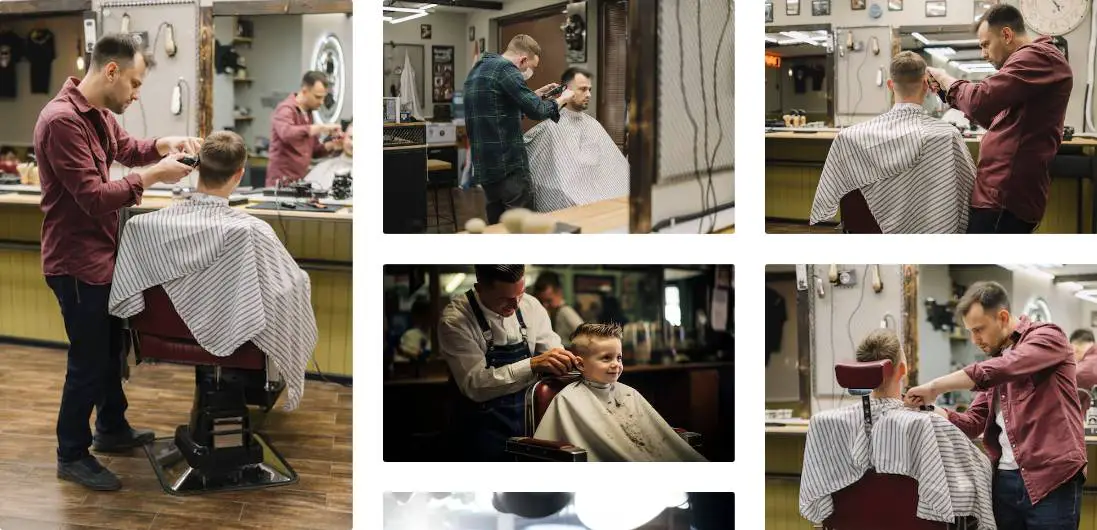
Understand the Importance of Communicating Your Desired Look to Your Stylist
Communicating your desired look to your stylist is crucial for achieving the perfect haircut. Your stylist is not a mind reader, and it’s up to you to clearly convey your vision, preferences, and expectations. By openly discussing your style goals, you can ensure that your stylist understands exactly what you’re aiming for and can provide tailored recommendations and guidance.
When meeting with your stylist, come prepared with a clear idea of the look you want to achieve. This could be anything from a specific celebrity-inspired style to a general aesthetic, such as “effortless and natural” or “bold and edgy.” Bring visual references, such as photos or magazine clippings, to help your stylist better understand your desired outcome.
Remember, your stylist is there to help you, not to make decisions for you. By actively participating in the consultation process and providing clear feedback, you’ll be able to work together to create a haircut that truly reflects your personal style.
Learn How to Provide Clear Instructions and Reference Images to Your Stylist
In addition to communicating your desired look, providing clear instructions and reference images to your stylist can greatly improve the chances of achieving your desired outcome. This level of detail and preparation will not only help your stylist understand your vision but also ensure that they can execute the cut with precision.
When discussing your haircut, be specific about the length, layers, bangs, and any other details you want to incorporate. Use descriptive language, such as “shoulder-length with long, face-framing layers” or “a short, textured pixie with a tapered nape.” This will give your stylist a clear roadmap to follow.
Supplement your verbal instructions with visual references, such as photos of haircuts you love. These can be images of celebrities, models, or even previous styles you’ve had. By providing these visual cues, you’re giving your stylist a tangible representation of the look you’re aiming for, making it easier for them to recreate it.
Remember, the more information you can provide, the better your stylist can understand your needs and deliver a haircut that exceeds your expectations.
Discover the Benefits of Seeking the Expertise of a Skilled, Experienced Stylist
While it may be tempting to experiment with DIY haircuts or visit a less experienced stylist, seeking the expertise of a skilled, experienced professional can make all the difference in achieving your desired look.
Skilled stylists have undergone extensive training and have honed their craft over years of experience. They possess a deep understanding of hair anatomy, cutting techniques, and styling methods, allowing them to provide tailored recommendations and execute precise haircuts that flatter your unique features.
An experienced stylist will also be able to assess your face shape, hair type, and texture, and recommend styles that will complement these attributes. They can offer valuable insights and suggestions that you may not have considered, helping you discover new looks that you’ll love.
Furthermore, skilled stylists often have access to high-quality products and tools that can enhance the longevity and performance of your haircut. They can provide guidance on proper maintenance and styling techniques, ensuring that your new look stays fresh and polished for longer.
By investing in the expertise of a skilled, experienced stylist, you’re not only ensuring a superior haircut but also gaining a trusted partner in your hair journey. Their knowledge and attention to detail can make all the difference in helping you achieve the perfect style that boosts your confidence and reflects your personal aesthetic.
Explore the Process of Trying Out Different Haircut Options with Your Stylist
When consulting with a professional stylist, don’t be afraid to explore different haircut options. The consultation process should be a collaborative experience, where you and your stylist work together to determine the best style for you.
Your stylist may suggest trying out various lengths, layers, or textures that you may not have initially considered. Be open-minded and trust their expertise, as they can often identify styles that will flatter your features in ways you may not have anticipated.
During the consultation, your stylist may even offer to create a few different mock-ups or sketches to help you visualize how different haircuts would look on you. This can be an invaluable tool in the decision-making process, as it allows you to see the potential outcomes before committing to a cut.
Additionally, your stylist may recommend trying out a new style in a gradual, step-by-step approach. This could involve starting with a more subtle change, such as adding face-framing layers or bangs, and then building upon that foundation in subsequent visits. This approach can help you feel more comfortable with the transformation and ensure that you’re completely satisfied with the final result.
By embracing the exploration process and trusting your stylist’s expertise, you’ll be able to discover a haircut that not only aligns with your personal style but also enhances your natural features and boosts your confidence.
Maintaining and Styling Your New Haircut
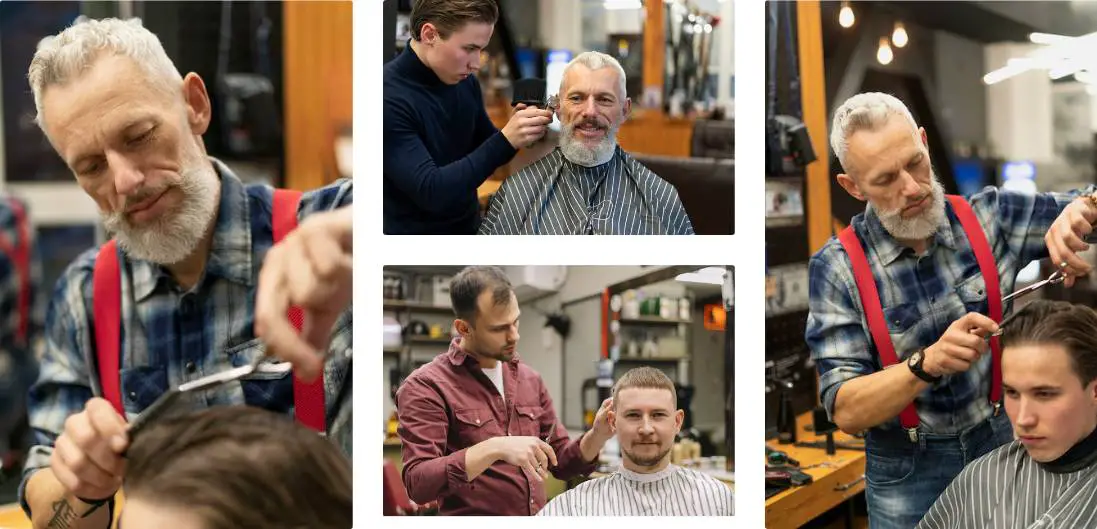
Develop a Routine for Regular Trims and Touch-Ups
Maintaining the perfect haircut requires a consistent routine of regular trims and touch-ups. Your hair grows at a rate of approximately half an inch per month, and without timely maintenance, your carefully crafted style can quickly become unruly and unkempt. Establishing a schedule for visits to your trusted stylist is essential to keeping your haircut looking its absolute best.
Depending on your hair type and the specific style you’ve chosen, you may need to visit the salon every 4-8 weeks for a trim or touch-up. This not only helps to remove split ends and keep your shape in check but also allows your stylist to make any necessary adjustments to ensure your haircut remains flattering and on-point. By committing to this routine, you’ll be able to enjoy the confidence and polished appearance that comes with a well-maintained haircut.
Explore Styling Products and Techniques
Achieving your desired look goes beyond just the initial cut – it also involves mastering the art of styling. Explore a variety of styling products and techniques to help you recreate your signature style day after day. From volumizing mousses and texturizing sprays to strategic blow-drying methods and strategic use of hot tools, the right combination of products and techniques can transform your haircut into a true work of art.
Experiment with different styling approaches to find what works best for your hair type and the specific cut you’ve chosen. Pay attention to how your hair responds to various products and techniques, and don’t be afraid to ask your stylist for personalized recommendations. With a little practice and the right tools, you’ll be able to effortlessly style your haircut to perfection, no matter the occasion.
Adapt Your Haircut to Different Occasions and Events
Your haircut should be a versatile asset that can be easily adapted to suit a variety of occasions and events. Whether you’re attending a formal gala, a casual weekend brunch, or a high-energy music festival, your haircut should be able to seamlessly transition between different settings and dress codes.
Explore styling techniques and product applications that allow you to easily switch up the look of your haircut. For example, you might opt for a sleek, polished style for a professional setting, and then quickly transform it into a tousled, textured look for a night out with friends. By mastering the art of adaptability, you’ll be able to confidently rock your haircut in any situation, showcasing your personal style and versatility.
Troubleshoot Common Hair Challenges and Find Solutions
Even with the best haircut and maintenance routine, you may occasionally encounter common hair challenges that require troubleshooting and problem-solving. Whether it’s dealing with frizz, managing unruly cowlicks, or finding ways to extend the life of your style, it’s important to have a toolbox of solutions at your disposal.
Consult with your stylist to identify the root causes of any hair-related issues you’re experiencing and work together to find effective solutions. This may involve trying different styling products, adjusting your blow-drying technique, or even considering a slight modification to your haircut. By being proactive and addressing challenges as they arise, you’ll be able to maintain the health and vibrancy of your haircut, ensuring that you always look and feel your best.
